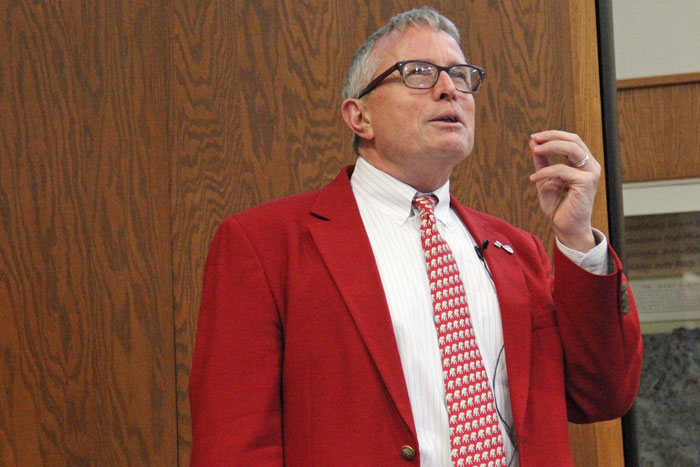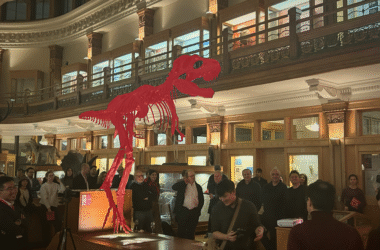The McGill Canada Excellence Research Chair in Green Chemistry and Green Chemicals Robin D. Rogers spoke at the Cutting Edge Lecture series on Feb. 9 at the Redpath Museum. Rogers work focuses on creating ionic liquids for cleaning using the principles of Green Chemistry—that is, designing chemical products that reduce environmental degradation.
His lecture—titled, “Canada can be the World’s economic superpower in the non-fossil fuel world and Green Chemistry can get us there”—revealed the scope of Rogers’ ambition.
“Maybe what I would do is take you through a personal story and see if we could ever arrive at the rather grand title that is up there today,” Rogers said.
Rogers grew up in Athens, Alabama. By the time he was two years old, he knew he wanted to become a scientist.
“To me, the 1960s were about science and technology,” Rogers said. “This was the race to the Moon. This was when to be a scientist or an engineer was the pre-eminent job that one would want to have.”
In this atmosphere, Rogers was inspired to attend the University of Alabama to study chemistry.
Then, something changed. Rachel Carson’s ground-breaking book, Silent Spring, was released in 1962 and the public’s perception of science began to shift. Chemists were perceived as creating toxic chemicals that pollute the planet and the number of environmental regulations began to increase.
“One thing that chemists do is we make things,” Rogers said. “We make new chemicals and these chemicals, a lot of times, get out into society and are used for some purpose.”
Rogers emphasized the need to test for potential toxicity in newly released chemicals.
Chemistry, as Rogers explained, can be used to protect the environment; but, unless it is bridged with other disciplines, it isn’t enough. Because of sustainability’s interdisciplinary nature, Rogers has developed a “three-legged stool” for sustainable development. The three legs are: Environmental integrity, social responsibility, and economic viability.
“I can tell you there’s a third leg academics never want to talk about,” Rogers said. “[Which is that] you have to make money.”
As a scientist, Rogers explains how he had to think about creating a business model. Though it wasn’t his area of expertise, he started his own company, 525 Solutions, in order to innovate and develop some of his new ideas. Particularly interested in using salts to break down compounds, his company focused on the development of ionic liquids. Unfortunately, his company was declined a grant from the U.S. Department of Energy, so Rogers sought inspiration elsewhere.
When the 2010 BP oil spill happened, Rogers went to see what he could do to help. He realized people were paying $100,000 a month to dispose of the shrimp shells that littered the Gulf of Mexico. Rather than shipping these crustacean shells off to a landfill, Rogers saw potential because the shells contained chitin.
As a naturally occurring biomolecule, chitin has economic value due to its flexibility and strength. Not only that, but the ionic liquid Rogers had previously developed could dissolve the shell, so all that remained was the chitin. The chitin industry is a $63 billion world-wide industry and no chitin producer currently operates in the United States.
Eventually, Rogers and his team were able to obtain a grant for their ionic liquid design. Now, Rogers is working on turning renewable polymers into products.
“I don’t want to replace anything,” Rogers said. “I want to eliminate it.”
Rogers came to McGill because he believes that Canada has all three of the legs for sustainable development. Unlike other resource-restricted countries, Canada has the opportunity for sustainable harvest of its raw materials. Canada also has the social fabric, intellectual capital, and natural resources to make sustainable goals a reality.
Rogers believes Canada can become a global economic superpower by developing new products from renewable polymers through the use of his tool: Green Chemistry.






